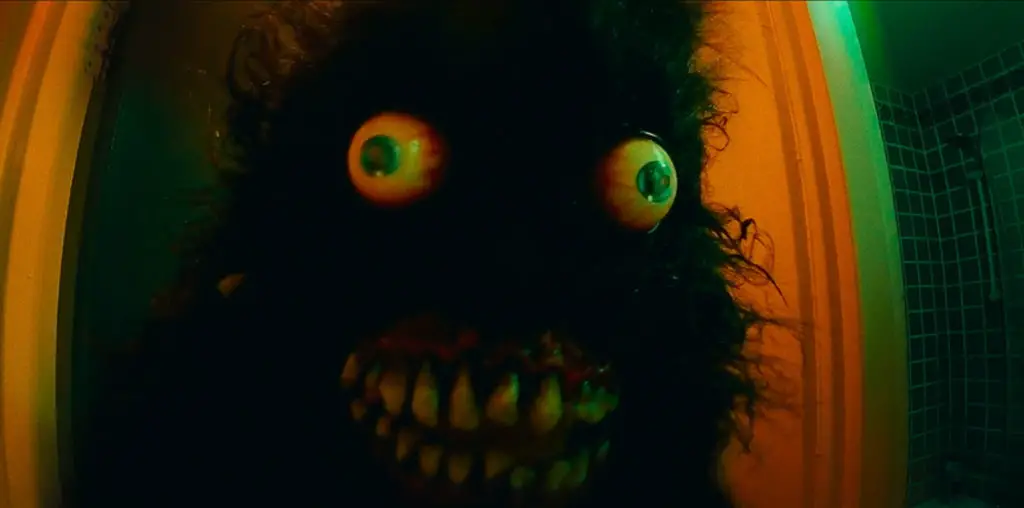
“That was . . .that . . . that was very hard . . .um, very, very hard to watch.”
Jake Arnott—the London-born author of The Long Firm, celebrated in the English press for his street-smart eloquence and witty verbage—cannot, at the moment, string a coherent sentence together to save his life.
Neither can I, for that matter.
As we exit the theater, it’s all we can do just to shrug and laugh and roll our eyes as the lingering effects of the movie’s mega-decibel music score continue to assault our overburdened brains.
Yes, we are suffering the initial post-traumatic effects of having just watched Rollerball, the big, embarrassing remake of the classic 1976 James Caan film about ultraviolent sports and Big Business in the “not too distant” future. In this version—directed by John McTiernan, and starring L.L. Cool J and “American Pie”‘s Chris Klein—the savvy political insinuations of the original story are ripped to bloody shreds in the filmmaker’s one-dimensional drive toward amping up the action and heightening the volume on the already visceral violence. The story, such as it is, follows a pair of American thrill-seekers who become star players in a corrupt Third World television sport, in which participants chase a heavy metal ball while racing around on skates and motorcycles.
As portrayed, it’s a pretty stupid sport, but one in which bloodletting and untimely death mean high ratings and a boost in corporate profits-not unlike the Hollywood machine that produced this movie.
Arnott, tall and spiky-haired, clad in black jeans and a fur-lined leather coat, makes a first attempt at conversation after we’ve seated ourselves in a bustling diner across the street.
“At the beginning,” he says, unleashing an adrenalized flood of words, “there was so much . . .It was exhausting all those cutaway shots and the way you got . . . and the weird, unexplained things like the money counting machines that were ‘Oh so bad,’ but . . .Plus I thought that the idea of a spectator sport in Kazakstan making that much money was a bit . . .Though obviously they were making their money from the T.V. syndication rights and all those other . . .Globally speaking, of course.”
Couldn’t have said it better myself.
My guest today is in the states to promote his newest novel, He Kills Coppers (Soho Press), based on the true-life story of Harry Roberts—here dubbed Billy Porter—the English petty-thief-turned-murderer who inspired a legendary late-Sixties football/soccer chant: (sung to the tune of London Bridge) “Harry Roberts is our friend, is our friend, is our friend. Harry Roberts is our friend, he kills coppers.” A pivotal episode of the book takes place during a 1966 World Cup soccer match between Britain and Germany, a not-so-subtle portrayal of the vital link between sports and violence. It’s a subject that has always intrigued Arnott, both on the field and on the screen.
“I very much liked the James Caan version of Rollerball,” he admits, finally regaining his conversational composure. “But we should probably not dwell too much on that version, lest we become even more depressed.” That said, he points to a specific sports-violence connection from his own country’s history. “In the late Sixties and early Seventies,” he says, “the violence in English sport took place mostly in the stands, amongst the spectators, with the rise of football hooliganism.” He explains that at that time, the sports stadiums were designed with seats in the middle, and two large terraces at either end-one for fans of the home team and one for the visitors. “What developed was this thing with each team’s hooligans attempting to take over the other end of the stadium. If you were a visiting team, and you could take the home team’s side, if you could actually infiltrate the terrace and attack the other team’s fans—that was considered a big victory.”
Arnott suggests that the Rollerball remake fails because, compared to the original, its violence is rendered meaningless by the lack of any relevant social context.
“It’s violence for its own sake,” he says, “so it’s boring. I write books with plenty of violence in them, but I hope that my violence is always there for a reason, and that, unlike this mess, it’s all somewhat compelling.” As for the type of violence that has always been the vogue in modern movies—explosive violence, with guys throwing punches that sound like cannon fire, distributing kicks that send a bloke flying across the room—Arnott likens it more to slapstick than to actual violence.
“Have you ever seen a real fight?” he asks. “There’s nothing spectacular about it. It’s two guys rolling around, pushing and punching and hitting. I don’t believe that real violence is explosive. It’s implosive. That’s the worst thing about violence, that it actually feels like it’s caving in on you. Someone slugs you, there’s the sound of a soft, dull thud, and you drop to the floor and pitch forward onto their feet. You don’t go sailing through the air. Real violence is an implosive act-and because of that, it’s truly terrifying.”
Therefore, argues Arnott, violence is not really as satisfying as it’s made out to be. “There is no catharsis in violence,” he says. “Violence only makes you hungrier for more violence. That’s what’s wrong with the central premise in this version of Rollerball,” he concludes. “In the movie, ratings go up the second the players begin getting hurt. Okay. But by the end of the movie, they’re just beating the guy up while he pathetically tries to crawl away. Tell me now—what’s entertaining about that?”
____________________________________________________________
Writer David Templeton takes interesting people to the movies in his ongoing quest for the ultimate post-film conversation. This is not a review; rather, it’s a freewheeling, tangential discussion of art, alternative ideas, and popular culture.
Check out FILMTHREAT.com’s FEATURE ARCHIVES and read more insightful stories, expert analysis, gut-busting satire and caustic commentary!
